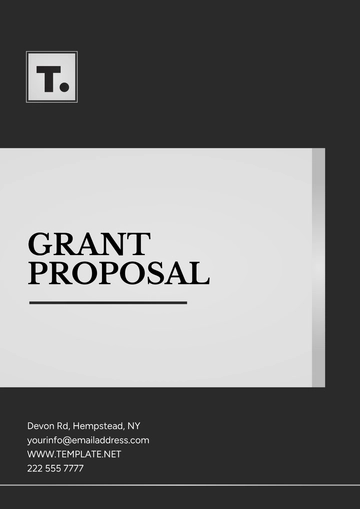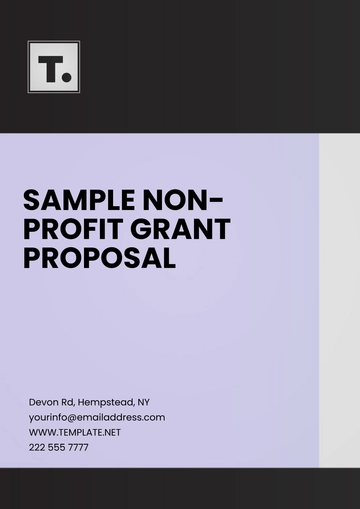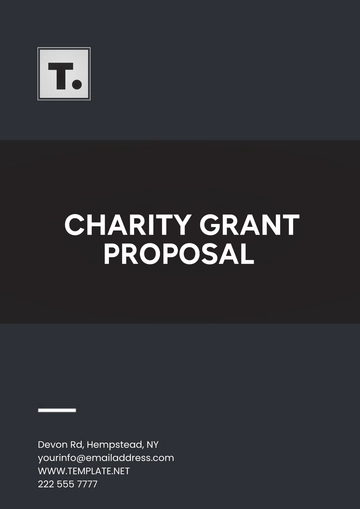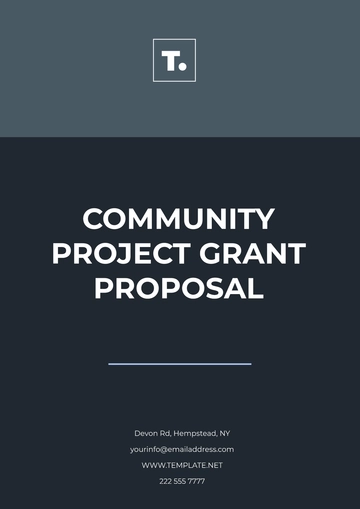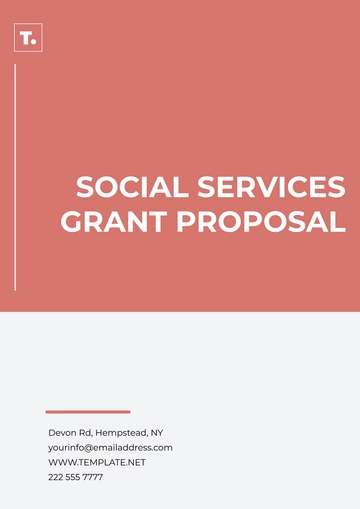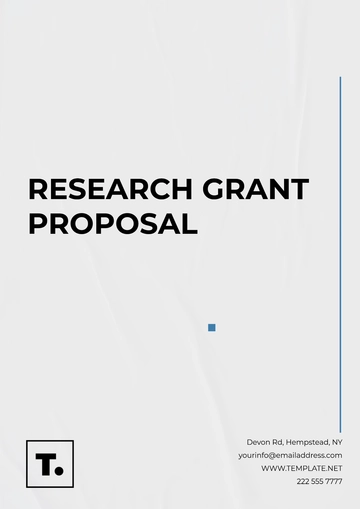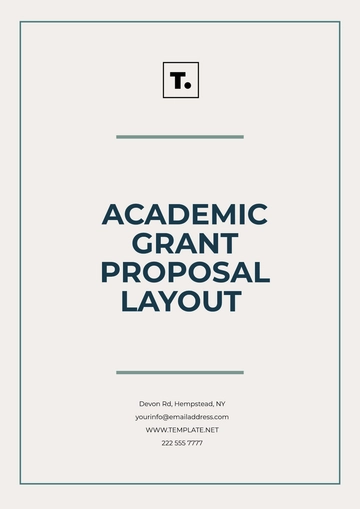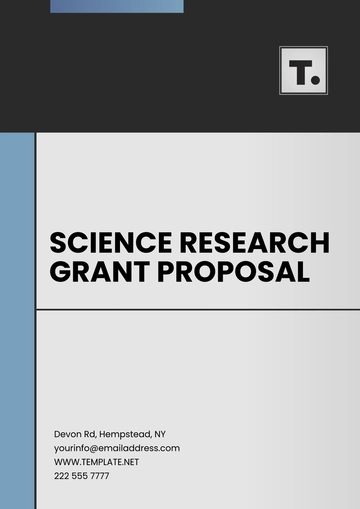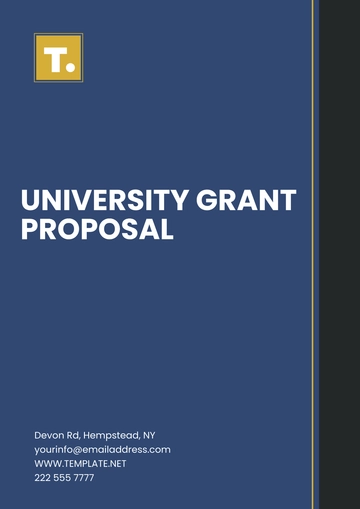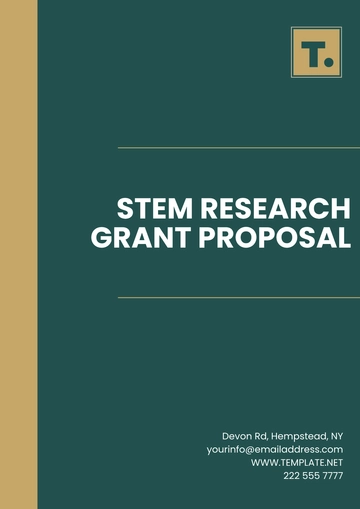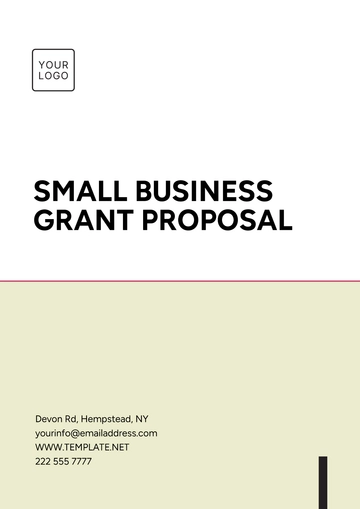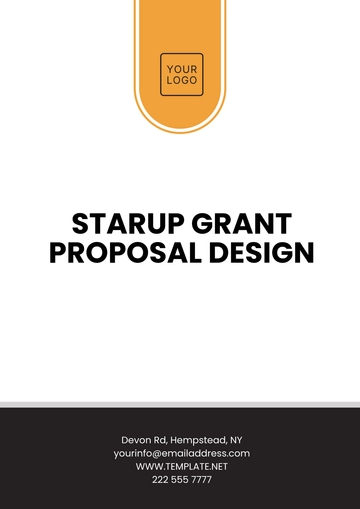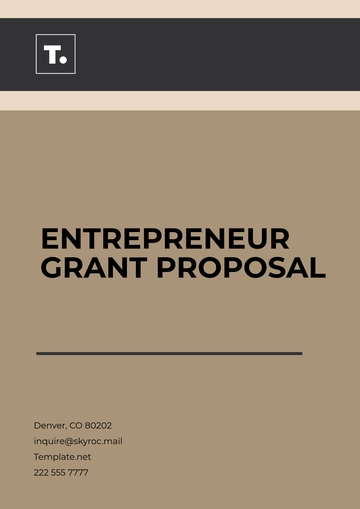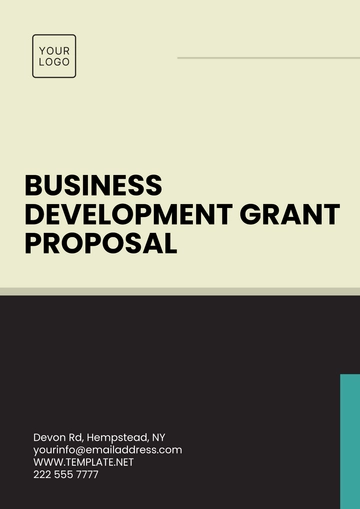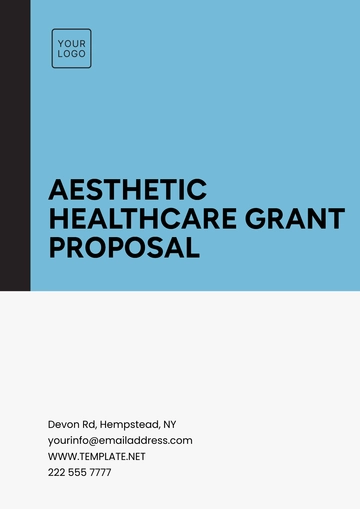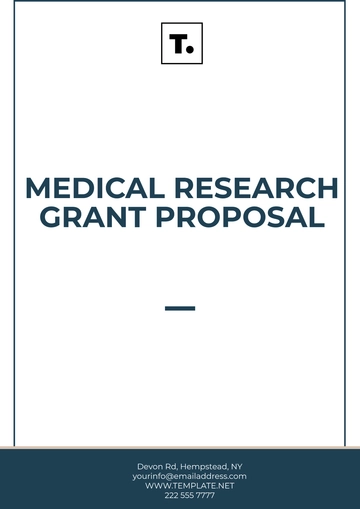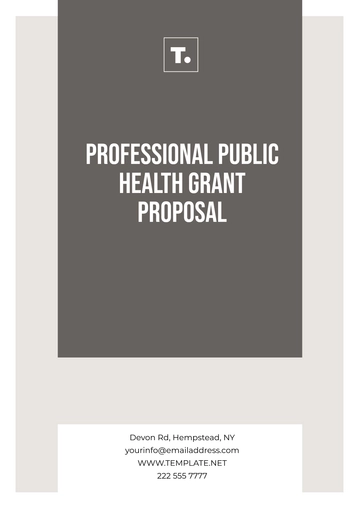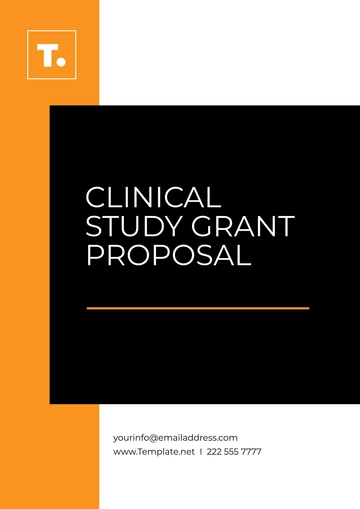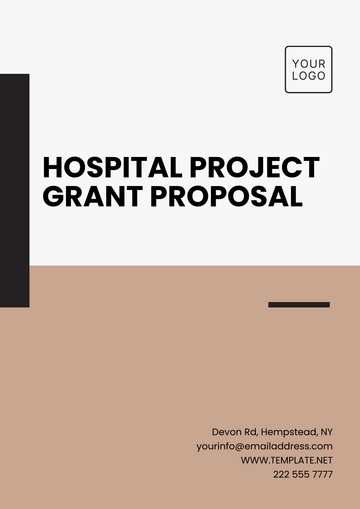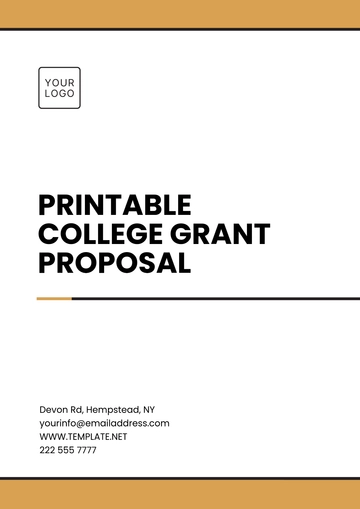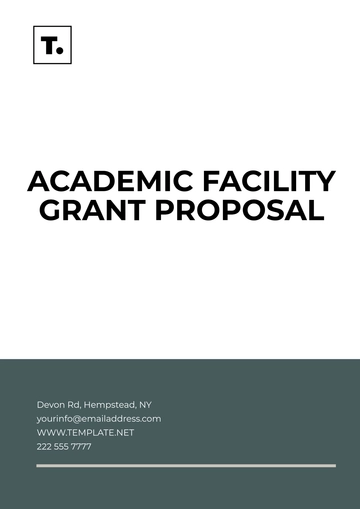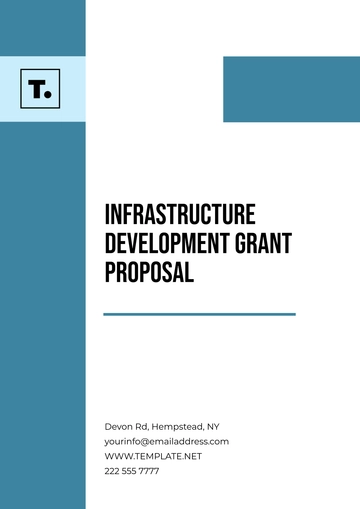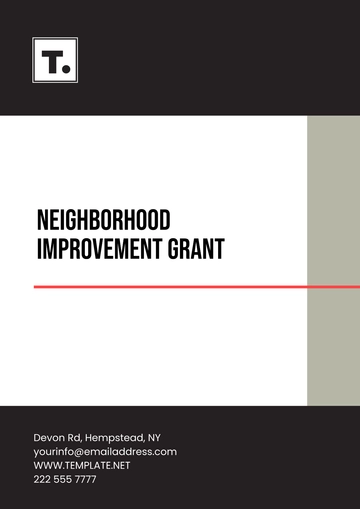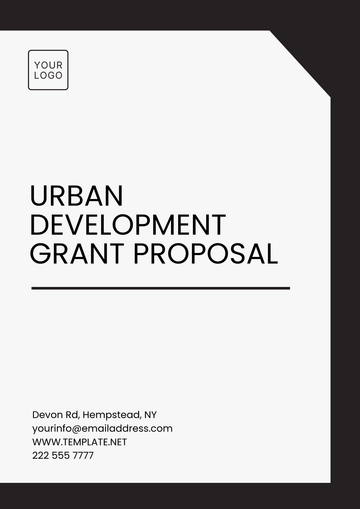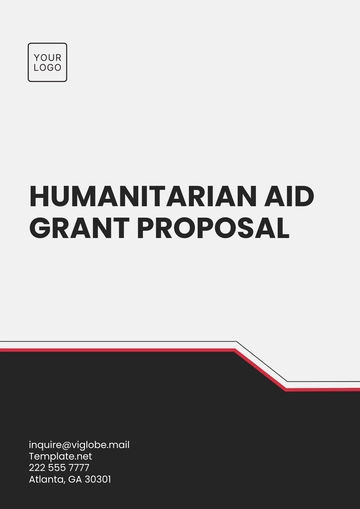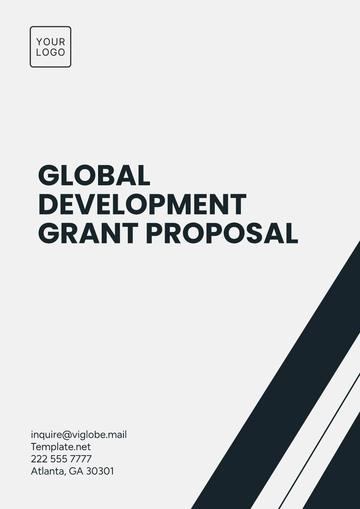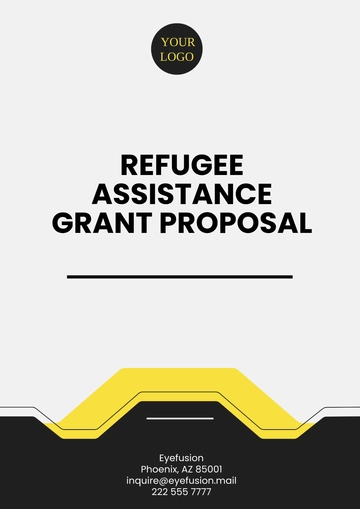Free Non-Profit Grant Proposal
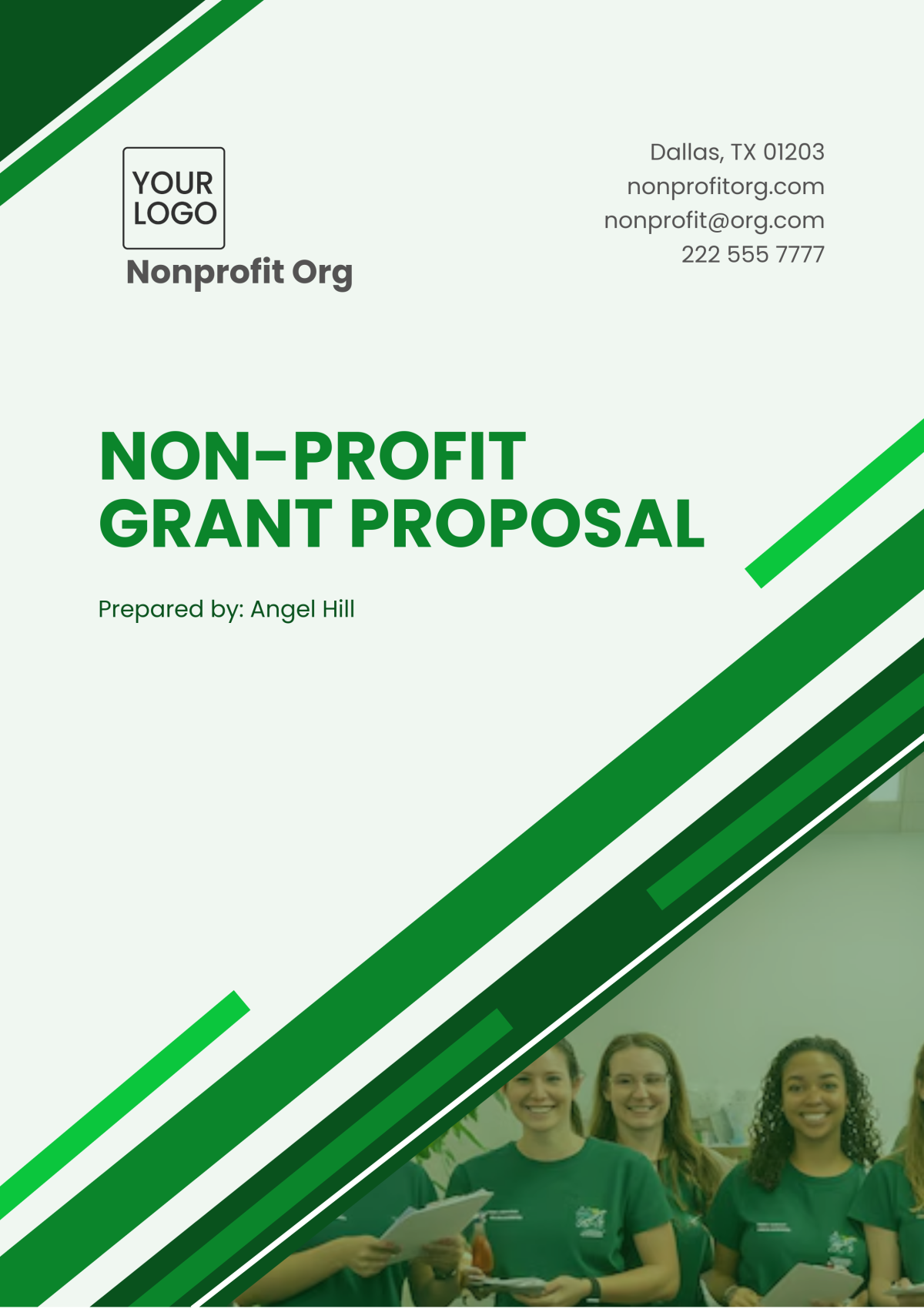
I. Executive Summary
A. Introduction
[Your Company Name] is dedicated to addressing the critical issue of economic inequality, educational disparity, and environmental degradation. Our mission is to advance social equity, provide equitable access to education, and promote environmental sustainability. As we navigate the complexities of the 2050s, we remain committed to driving meaningful change through impactful projects.
This grant proposal seeks funding of [$1,500,000] from [Grant Provider's Name] to support our initiative, "Innovating for Equity: A Holistic Approach to Sustainable Community Development." This multi-year project is designed to tackle pressing challenges in [specific region or demographic], and the requested funds will enable us to implement and sustain our efforts from [2051] to [2054].
B. Project Overview
The "Innovating for Equity" project aims to address critical needs within [specific region], focusing on three primary areas:
Educational Empowerment: Enhance access to quality education and skill-building resources.
Environmental Sustainability: Implement eco-friendly technologies and practices to promote sustainable living.
Economic Development: Create job opportunities and foster entrepreneurship among underserved populations.
With the requested funding of [$1,500,000], we will support the following key activities:
Development of educational infrastructure and resources.
Implementation of vocational training and entrepreneurial programs.
Introduction of environmental sustainability initiatives.
Our project is designed to make a transformative impact on [target population], and we anticipate significant progress in education, economic stability, and environmental resilience by the end of the grant period.
II. Statement of Need
A. Problem Statement
The Rural Highlands Region in [Country Name] faces a range of interconnected challenges that hinder progress and perpetuate cycles of poverty and marginalization. As we advance into the 2050s, these issues have become increasingly pressing:
1. Economic Inequality
Economic inequality in the Rural Highlands Region in [Country Name] has reached critical levels. Reports indicate that [35%] of households live below the poverty line, while the unemployment rate stands at [20%]. The lack of job opportunities and inadequate income support have entrenched poverty in this community, creating barriers to upward mobility.
2. Educational Barriers
Access to quality education remains a significant challenge, with [40%] of children and youth lacking the resources needed for effective learning. Many schools are under-resourced, and only [25%] of households have reliable access to high-speed internet. These educational barriers hinder students' ability to achieve academic success and acquire the skills necessary for future employment.
3. Environmental Concerns
Environmental degradation is a growing threat in the Rural Highlands Region in [Country Name]. Issues such as deforestation, water scarcity, and air pollution are impacting public health and local economies. Climate change exacerbates these problems, with [30%] of households experiencing food and water insecurity. Addressing these environmental challenges is crucial for long-term community well-being.
B. Population Served
The "Innovating for Equity" project will target approximately [10,000] individuals within the Rural Highlands Region in [Country Name] , including:
Youth: [4,000] children and adolescents who will benefit from improved educational resources and programs.
Adults: [5,000] adults who will have access to vocational training and employment opportunities.
Elderly: [1,000] elderly individuals who will be included in community-based environmental and educational activities.
The project will particularly focus on vulnerable groups, including [low-income families, single parents, indigenous communities], ensuring that our interventions are tailored to meet their unique needs and challenges.
III. Project Objectives
A. Long-Term Objectives
The long-term goals of the "Innovating for Equity" project are to achieve significant, sustainable improvements in the following areas by the end of the project period in [2054]:
Increase Educational Access: Improve educational outcomes for [4,000] students by enhancing digital and physical access to learning resources. Our aim is to raise literacy and numeracy levels by [20%] and ensure that [80%] of students complete their education with the skills needed for higher education or employment.
Boost Economic Growth: Reduce the unemployment rate among young adults aged 18-35 in the Rural Highlands Region by [15%] through job creation and vocational training. This demographic is particularly affected by high unemployment and underemployment rates, which have been exacerbated by limited access to relevant skills training and job opportunities.
Promote Environmental Resilience: Achieve a [25%] reduction in carbon emissions and enhance environmental sustainability by implementing green technologies and practices. This includes reforesting [500] hectares and installing solar panels in [1,000] homes and community centers.
B. Short-Term Objectives
During the initial [1]-year period, the project will focus on the following short-term objectives:
Develop Partnerships: Forge partnerships with local educational institutions, environmental organizations, and businesses. This will involve formal agreements and collaboration on project implementation and resource sharing.
Capacity Building: Conduct training sessions for [100] community leaders, educators, and environmental advocates. These sessions will cover digital literacy, teaching methodologies, and sustainability practices.
Outreach and Recruitment: Launch a community outreach campaign to enroll [2,000] individuals in educational and vocational programs. This will involve targeted communication strategies to engage potential participants and ensure diverse representation.
IV. Project Design and Implementation
A. Methodology
The project will be implemented in three distinct phases, each designed to address specific aspects of the project's goals. The methodology involves a combination of direct intervention, capacity building, and community engagement:
1. Phase 1 (Year 2051) – Educational Infrastructure
In the first year, we will focus on enhancing educational resources and access:
Infrastructure Development: Partner with local schools and educational technology providers to equip [50] learning centers with necessary digital resources, including computers, tablets, and high-speed internet.
Resource Allocation: Distribute educational materials such as textbooks, learning software, and interactive tools to [50] schools and community centers.
Awareness Campaign: Implement a community-wide campaign to highlight the importance of education and encourage enrollment in available programs.
2. Phase 2 (Year 2052) – Economic Empowerment
The second year will concentrate on economic development and vocational training:
Vocational Training Programs: Develop and deliver training programs focused on high-demand sectors such as renewable energy, technology, and sustainable agriculture. Aim to train [1,000] individuals in these fields.
Entrepreneurship Workshops: Organize workshops to provide aspiring entrepreneurs with the skills needed to start and manage their own businesses. Offer support in areas such as business planning, marketing, and financial management.
Job Placement Assistance: Work with local businesses and organizations to create job opportunities for trained individuals. Provide job placement services and career counseling.
3. Phase 3 (Year 2053) – Environmental Sustainability
The final year will focus on implementing sustainability initiatives:
Reforestation Projects: Initiate reforestation efforts to restore [500] hectares of degraded land. Partner with local environmental groups to ensure the successful planting and maintenance of trees.
Renewable Energy Installation: Install solar panels in [1,000] homes and community buildings to reduce reliance on non-renewable energy sources and lower energy costs.
Community Training: Provide training on sustainable practices, including water conservation, waste management, and energy efficiency. Engage community members in hands-on activities and workshops.
B. Timeline
The project timeline is outlined below, detailing key activities and milestones over the [3]-year period:
Year | Key Activities | Expected Outcomes |
|---|---|---|
2051 | Establish educational infrastructure and partnerships | [50] learning centers equipped, [2,000] students enrolled |
2052 | Launch vocational and entrepreneurship programs | [1,000] individuals trained, [15%] reduction in unemployment |
2053 | Implement environmental sustainability initiatives | [1,000] solar panels installed, [500] hectares reforested |
C. Key Personnel
The project will be led by a team of experienced professionals from [Your Company Name], supported by local experts and volunteers:
[Executive Director] – Responsible for overall project strategy, financial oversight, and stakeholder engagement. The Executive Director will ensure that the project aligns with organizational goals and donor expectations.
[Project Manager] – Manages day-to-day project operations, including coordination of activities, monitoring progress, and addressing any issues that arise.
[Educational Coordinator] – Oversees the development and implementation of educational programs and resources. Acts as the liaison between schools, educators, and the project team.
[Sustainability Expert] – Leads the environmental sustainability initiatives, including the implementation of green technologies and practices. Provides expertise on environmental issues and solutions.
In addition, we will collaborate with local experts, community leaders, and volunteers to ensure the project is culturally relevant and effectively addresses the needs of the target population.
V. Budget
A. Total Project Budget
The total budget for the "Innovating for Equity" project is [$1,500,000], allocated over the [3]-year implementation period. The budget includes expenses related to staff salaries, program materials, operational costs, and evaluation activities. The following table provides a detailed breakdown of the budget:
Budget Category | Year 2051 | Year 2052 | Year 2053 | Total |
|---|---|---|---|---|
Staff Salaries | [$400,000] | [$400,000] | [$400,000] | [$1,200,000] |
Educational Materials | [$150,000] | [$50,000] | [$0] | [$200,000] |
Technology Infrastructure | [$100,000] | [$25,000] | [$0] | [$125,000] |
Vocational Training | [$0] | [$200,000] | [$0] | [$200,000] |
Environmental Initiatives | [$0] | [$0] | [$300,000] | [$300,000] |
Evaluation and Reporting | [$50,000] | [$25,000] | [$25,000] | [$100,000] |
Total | [$700,000] | [$700,000] | [$725,000] | [$1,500,000] |
B. Funding Request
[Your Company Name] is requesting a total of [$1,500,000] from [Grant Provider's Name] to support [100%] of the project's overall budget. The requested funding will be used to cover:
Program Costs: Implementation of educational, vocational, and environmental initiatives.
Operational Expenses: Salaries for project staff and administrative costs.
Materials and Resources: Acquisition of educational tools, vocational training materials, and environmental technology.
VI. Evaluation and Sustainability
A. Monitoring and Evaluation Plan
To ensure the effectiveness and accountability of the project, [Your Company Name] will implement a comprehensive monitoring and evaluation (M&E) plan. The M&E plan will include:
Performance Indicators: Key performance indicators (KPIs) will be established to measure progress toward each objective. These indicators will cover educational outcomes, economic impacts, and environmental achievements.
Data Collection: Data will be collected using a combination of surveys, interviews, focus groups, and administrative records. Both quantitative and qualitative data will be gathered to provide a comprehensive assessment of the project's impact.
Reporting: Quarterly reports will be produced to track progress and address any issues. An annual evaluation report will provide a detailed analysis of the project's achievements, challenges, and lessons learned.
Feedback Mechanisms: Regular feedback will be solicited from beneficiaries, partners, and stakeholders to ensure that the project remains responsive to community needs and preferences.
B. Sustainability Plan
To ensure the long-term success and sustainability of the "Innovating for Equity" project, [Your Company Name] will implement the following strategies:
Strengthen Local Capacities: Train and empower local community leaders, educators, and environmental advocates to continue the project's activities beyond the grant period. This will include creating training materials and resources that can be used independently.
Diversify Funding Sources: Pursue additional funding opportunities through local government partnerships, corporate sponsorships, and community-based fundraising efforts. We will also explore options for generating revenue from project-related activities, such as paid training programs and consulting services.
Create Self-Sustaining Systems: Develop and implement self-sustaining systems, such as community-run renewable energy projects and income-generating environmental initiatives. These systems will provide ongoing benefits and reduce reliance on external funding.
VII. Conclusion
The "Innovating for Equity" project represents a bold and comprehensive effort to address the multifaceted challenges facing the Rural Highlands Region. By focusing on education, economic development, and environmental sustainability, [Your Company Name] aims to create a lasting and positive impact on the community.
We are confident that with the support of [Grant Provider's Name], we can achieve our objectives and foster meaningful change. The requested funding of [$1,500,000] will enable us to implement and sustain this transformative initiative, making a significant difference in the lives of young adults in this region.
Thank you for considering our proposal. We look forward to the opportunity to work together in advancing our shared vision for a more equitable and sustainable future.
For further information or to discuss the proposal in detail, please contact [Your Name] at [Your Email] or [Your Number].
- 100% Customizable, free editor
- Access 1 Million+ Templates, photo’s & graphics
- Download or share as a template
- Click and replace photos, graphics, text, backgrounds
- Resize, crop, AI write & more
- Access advanced editor
Secure funding with the Non-Profit Grant Proposal Template from Template.net. This editable and customizable template provides a structured format for grant applications. Customize it in our Ai Editor Tool to align with grant requirements and enhance your funding chances. Unlock your funding potential—start drafting your winning grant proposal now!
You may also like
- Business Proposal
- Research Proposal
- Proposal Request
- Project Proposal
- Grant Proposal
- Photography Proposal
- Job Proposal
- Budget Proposal
- Marketing Proposal
- Branding Proposal
- Advertising Proposal
- Sales Proposal
- Startup Proposal
- Event Proposal
- Creative Proposal
- Restaurant Proposal
- Blank Proposal
- One Page Proposal
- Proposal Report
- IT Proposal
- Non Profit Proposal
- Training Proposal
- Construction Proposal
- School Proposal
- Cleaning Proposal
- Contract Proposal
- HR Proposal
- Travel Agency Proposal
- Small Business Proposal
- Investment Proposal
- Bid Proposal
- Retail Business Proposal
- Sponsorship Proposal
- Academic Proposal
- Partnership Proposal
- Work Proposal
- Agency Proposal
- University Proposal
- Accounting Proposal
- Real Estate Proposal
- Hotel Proposal
- Product Proposal
- Advertising Agency Proposal
- Development Proposal
- Loan Proposal
- Website Proposal
- Nursing Home Proposal
- Financial Proposal
- Salon Proposal
- Freelancer Proposal
- Funding Proposal
- Work from Home Proposal
- Company Proposal
- Consulting Proposal
- Educational Proposal
- Construction Bid Proposal
- Interior Design Proposal
- New Product Proposal
- Sports Proposal
- Corporate Proposal
- Food Proposal
- Property Proposal
- Maintenance Proposal
- Purchase Proposal
- Rental Proposal
- Recruitment Proposal
- Social Media Proposal
- Travel Proposal
- Trip Proposal
- Software Proposal
- Conference Proposal
- Graphic Design Proposal
- Law Firm Proposal
- Medical Proposal
- Music Proposal
- Pricing Proposal
- SEO Proposal
- Strategy Proposal
- Technical Proposal
- Coaching Proposal
- Ecommerce Proposal
- Fundraising Proposal
- Landscaping Proposal
- Charity Proposal
- Contractor Proposal
- Exhibition Proposal
- Art Proposal
- Mobile Proposal
- Equipment Proposal
- Student Proposal
- Engineering Proposal
- Business Proposal
